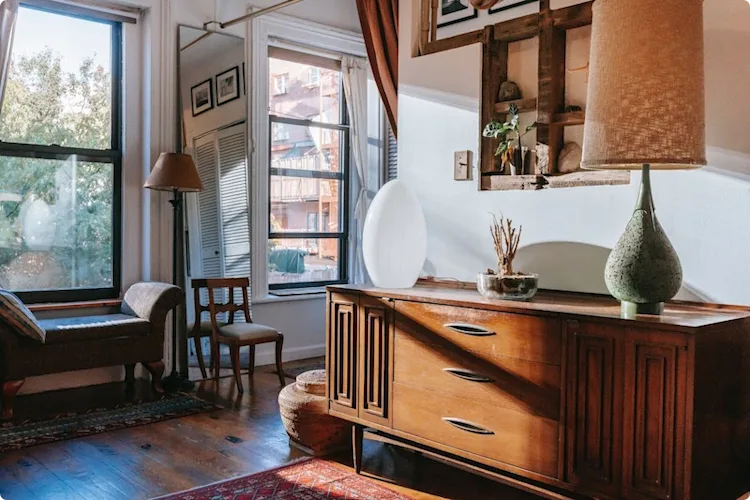In keeping with the arrival of spring, we’re exploring new beginnings in the things that feel most familiar to us. As the weather warms and the sunshine teases blossoms out of tree branches, the very fabric and furniture of our homes can be transformed with just a few simple steps.
Depending on your generation, the process of zhuzhing up outdated furniture could be coined ‘make do and mend’, ‘DIY’ or – if you’re in the current zeitgeist of this phenomenon: ‘upcycling’. We discuss why it’s so popular, what projects you could take on to try your hand at it and where you can find inspiration for your own endeavours.
Why furniture upcycling popularity has soared
Upcycling isn’t exactly a new concept. As long as there has been furniture, some people will have been dedicated to its upkeep for as long as possible. However, historically this fixation on the conservation of everyday furniture would have emerged more from necessity than lifestyle choice. The term itself was coined by German engineer Reiner Pliz in 1994. The overarching idea was to improve what you have and even to add value to it as a means of spending less on buying brand new, reducing consumer demand for newness and encouraging greater environmental awareness.
With some of the public’s key concerns today falling into the categories of rising personal costs, the health of our environment and the impact of our shopping behaviour in encouraging waste, it’s no wonder that upcycling has stuck around. It’s also been suggested, by our Happy Home report, that part of what makes us happy is seeing ourselves reflected back in our homes. This means that if you spend time and energy breathing new life into existing pieces of furniture to make it suit your current style, it’s more likely to influence how positive you feel towards your home in general.

Benefits of upcycling
Tom Revill, Plank Hardware Co-Founder tells us: 'In a world of mass production and homogenous design, upcycling is a brilliant approach to creating a home environment that feels totally unique. We’re often too quick to dispose of furniture that has perfectly good bones (made of quality materials, or is structurally sound), and we overlook the potential that it has. Quite often, all that’s required is a little vision, then a sand, paint and refresh of the finer details such as hardware.
Upcycling is also a far more affordable way to breathe new life into your home, not to mention a super rewarding pastime. You’re far more likely to treasure and care for a furniture piece that you’ve invested time and energy into, plus you’ll want to show it off to all of your visitors.'

























